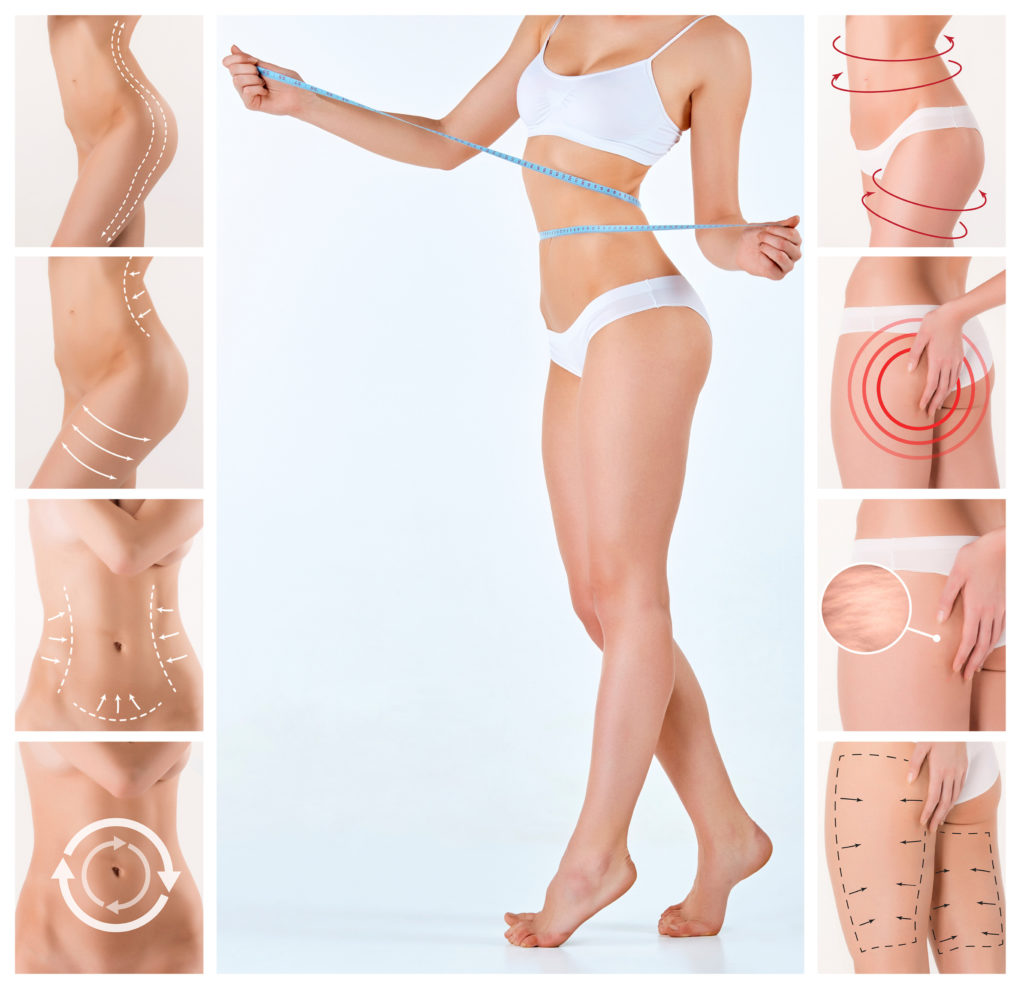Liposuction, also known as liposculpture, is a surgical procedure that we carry out in Tebon, Clinic of Aesthetic and Plastic Surgery in Málaga, which consists in the aspiration through small incisions of fat deposits located under the skin.
Liposuction is focused on correcting some body regions in which fatty accumulations persist, usually rebellious to diets and exercise, therefore, it is important to emphasize that liposuction is not a treatment of obesity. With this technique you can suck fat from different parts of the body. body: thighs, hips, ankles, knees, arms, abdomen, jowls … Sometimes it is complemented by other interventions (tummy tuck, thigh lift, etc.).

Before the surgery
In the first consultation, the plastic surgeon will evaluate your general condition, the accumulations of existing fat and the firmness and elasticity of the skin. Other alternative methods to improve body contouring, such as abdominoplasty, will be explained to you, and the options or combination of procedures that are best for you will be discussed. Do not forget to tell if you have had any significant weight changes. You must also tell if you are a smoker or take any medication. You must express your expectations sincerely, so that the plastic surgeon is also so and show you the available alternatives for your problem, with the risks and limitations of each of them.
During surgery
Liposuction is performed in the operating room, inside a clinic or hospital. Many times it is carried out in an itinerant regime, without the need for admission. In very extensive liposuction, an admission of 2 or more days may be necessary.
Generally the anesthesia will depend on the size of the area that is to intervene, being able to be local anesthesia and sedation for small areas, epidural if it is only in legs or general anesthesia if it is a wider liposuction. A liposuction usually lasts between 1 and 2 hours, but the time is variable depending on the area and the amount.
Initially, a small incision of a few millimeters is made, enough to introduce a hollow tube called a liposuction cannula. The other end of this cannula is attached to a machine that produces vacuum and sucks up the fat. Sometimes it is necessary to make additional incisions to eliminate all fat deposits
After surgery
After the surgery a band, stockings or elastic bandage will be placed on the treated area to control the bleeding and swelling and also to help the skin adapt to the new contour. It is usually necessary to take it for 3 or 4 weeks. The liposuction areas will probably be swollen and bruised and you may have a burning sensation. The pain can be relieved with the medication prescribed by your plastic surgeon. Do not expect to have an optimal appearance right after surgery; it will also be heavier due to the excess of fluids that are administered. You may lose sensitivity in the treated area; Do not worry, it will recover over time.
Healing is a gradual process. The points of the small incisions will be removed between 5 and 10 days. Your plastic surgeon will instruct you to start walking as soon as possible, but do not do intense activities for 2 to 4 weeks. You can go back to work in a week from the procedure, depending on the size of the liposuction. The swelling and bruising will usually disappear in the first or second month after liposuction; however, minimal inflammation can be last 6 or more months.
Frequently asked questions
To undergo liposuction, the ideal candidates are those people who have a relatively normal weight but who have accumulations of fat in localized areas. If you have a psychological stability and a good general state of health, and also, if your expectations are realistic, you will be a good candidate. The most important thing to obtain an optimal final contour is to have a firm and elastic skin (the skin that “hangs” will not redistribute on the new body contour and may require some additional surgical procedure to remove excess skin). Liposuction is not recommended if you have poor circulation in the area to be treated or if you have had recent surgery in that area, or if you have heart or breathing problems. It is also important to know that liposuction does not improve cellulite.
Liposuction is a safe technique, as long as the patient is well selected, it is performed by a qualified plastic surgeon and the operating room is well equipped. However, complications can occur, especially when large amounts of fat are removed at one time. Another infrequent complication, although possible, is the accumulation of fluid. Although serious complications are very rare, infection and excessive fluid loss can cause a serious situation. The scars of liposuction are minimal and strategically placed so that they are hidden. However, sometimes there may be some aesthetic problems, regardless of the experience of the plastic surgeon; these may be undulations on the treated skin, changes in color that may be permanent if we expose ourselves to the sun.
The results can be permanent, as long as you maintain a proper diet and exercise periodically. If you gain weight it will do so more homogeneously and not only in localized deposits of fat. Most patients are very satisfied with the results of their liposuction, as long as their future expectations are realistic, they will be happy with their new silhouette, they will be able to use more varied clothes and they are more satisfied with their body.
In comparison with other aesthetic interventions, after a liposuction it is not necessary to rest, on the contrary, it is recommended to return to normal activity to accelerate recovery. What your surgeon will indicate as important is to properly use the compression garments for a while.
